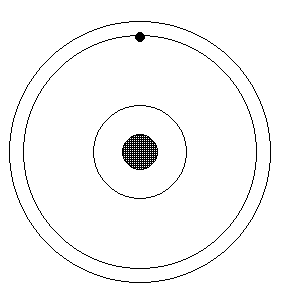Physical Principles
- What would happen to the Earth's orbit if the mass of the Sun were
instantaneaously doubled? Would the Earth move closer to or further from the
Sun?
- What if a giant trash compactor in the sky came and compressed the Sun to
half its current volume? What would happen to the Earth's orbit then?
- If the Moon's angular momentum were cut to less than a third of what it is
now but the mass remained the same: How would the Moon's orbit change?
- Which exerts a stronger gravitational attraction on you, your friend
standing 3 meters away from you or the planet Jupiter? (Relevant info about
Jupiter is in table 8-1 of your book, page 182.)
- Draw a thermal radiation curve (intensity versus wavelength) of an object
that is at a temperature of about 6000 degrees K. Where is the high frequency
end on your graph? What happens to the peak of the curve as you heat the
object?
- Which releases more microwaves: a star at 6,000 degrees Kelvin or a star at
10,000 degrees Kelvin?

- Two stars are the same color. Star A is 9 times fainter than star B. Which
is further away? How much further?
- The atom at right just absorbed a microwave photon.
What does the conservation of energy say must happen to the electron?
- A moment later, the electron drops to the ground state. The conservation
of energy says that a photon must be released by the atom. Is that photon
shorter or longer than a microwave?
- Helium is the second element in the periodic table. It has two protons and
two neutrons, and two electrons. If you add an extra neutron, is it still
helium? If you take away one of the electrons, is it still helium? If you add
an extra proton, is it still helium?